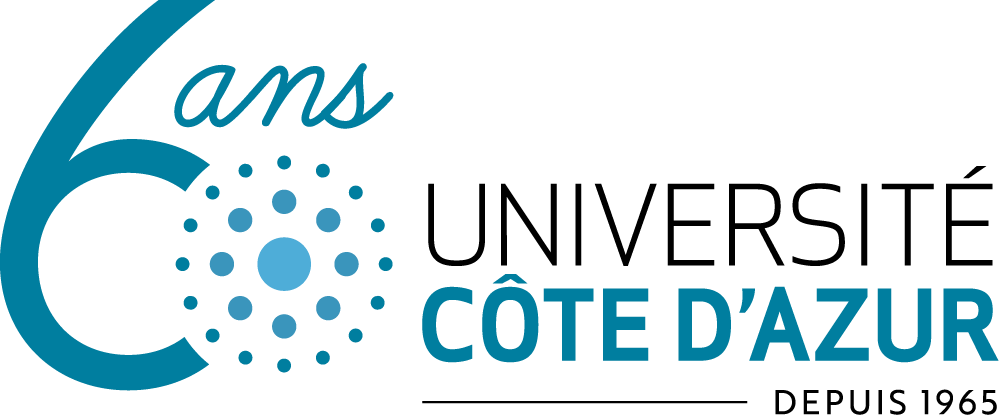Master ARTS
Call to actions
Résumé
Acquire the tools and methodologies necessary for the practice and the understanding of the living arts (dance, music, theater), for their cultural and intercultural inscription (ethnology of the living arts in particular) and their contemporary challenges Read moreObjectifs
Initial training
/
Executive Education Program
/
Accessible for resumption of studies
/
Master
2 years
/
Continuous monitoring and terminal monitoring (university calendar) + modular courses - specified weeks"
Ecole Universitaire de Recherche Arts et Humanités
Nice Campus Valrose / Nice
French
Details
Accéder aux sections de la fiche
Introduction
The Arts Master’s degree is placed at the heart of articulation theory(s)/practice(s). In particular, it accompanies research projects in practice, including field survey methodologies for the ethnology of the living arts, or even scientifically-informed practice and research-creation. The Master’s program in Arts is divided into 5 pedagogies, oriented towards or by practices, or supported by school of art partners of the Université Côte d'Azur. The tracks ensure continuity of training and professional orientation in the field of the arts and the living arts: "Knowledge of the dancing body: improvisation, transmission, archives", "Musical creation, performance and pedagogy" under agreement with Nice CRR and CIRM, "Performing arts-theater: research and creation", "Ethnology of the living arts", "Interarts", an à la carte track.
Objectives
The master’s degree in Arts combines several forms of research and practice: strictly disciplinary at first, conducted in a specific field where the student will acquire strong technical skills, and subsequently transdisciplinary promoting reflection on the conjunction of different forms of artistic expression. The transdisciplinarity manifests itself in the desire to bring together students working in different artistic and scientific fields, both within a common work of theoretical reflection (aesthetic issues, links between the arts, investigation of the field and archives, consideration of genesis, transmission and circulation of movements, etc.), and within a common practice in which the different forms of expression are related. The training program has multiple education and research objectives: Expand the notions of "art" and "creation" by beyond their merely aesthetic frame: music, dance, theater are approached not only as performing arts, but also as social and/or cultural practices within specific historical contexts, and as remarkable tools contributing to the construction of specific knowledge available to a wider community. Observe the phenomena of art on and off the stage (studio spaces, movements of transmission, etc.), in the present, but also in different times and spaces, while including the so-called minor practices (puppets, mime, modern music, improvisation, etc.) Study these phenomena and their traces using multiple approaches from the human and social sciences, and their possible intertwining: aesthetics, history, anthropology, ethnology, philosophy, analysis, etc. Construct new epistemological categories relating to creation, transmission, circulation, and archives in the field of the living arts.
Specificities
Within each track, students have the choice to select "optional" teaching units (UE) for subjects other than their own. Thus, for each semester, the student can choose UE from his or her discipline (major), as well as one or two UE from another discipline, even in another program or school of art, or in the form of internship (minor). The list of elective UEs is updated each year. The "Ethnology of the living arts" track combines anthropology of dance, ethnomusicology and ethnoscenology. Despite these crossovers, students must conduct their research in one of the three disciplines listed above. The "Creation, performance and musical pedagogy" track combines several options: the creation option and the musical pedagogy option which are offered in agreement with the Nice CCR (Conservatoire à Rayonnement Régional) and the CIRM (National Center for Musical Creation). They introduce the professions of musical composition and the trades of instrumental pedagogy and are subject to double registration at the Conservatoire de Nice and the University. The musical studies option is common and allows access to research professions, with the integration of master’s students into research programs. The "Knowledge of the dancing body: improvisation, transmission, archives" track is conceived in the form of intensive modules, half-practical and half-theoretical, which question corporeality as place of experience and construction/deconstruction of singular knowledge, in cultural and historical contexts. In 2019 it first offers an "improvisation in dance" educational option for dancers-researchers engaged in experimental practices of the movement. This option is based on the creation of an Improvisation Summer School that will bring improvisers, researchers, Art Schools and the University together each year. The "Performing arts-theater: research and creation" track has a specific research-creation option. TheInterartstrack ("à la carte") allows the student to compose a curriculum according to the teaching units that are the most relevant to his or her research work or personal and professional project. Advised by the pedagogical team, the student builds the program as his or her training progresses.
Places
Nice
Person in charge of the academic program
Nathalie Gauthard
Admission
Prerequisite
Prerequisites for enrolment
Undergraduate level
What's next ?
Level of education obtained after completion
Year of highschool graduation
Graduate levelLevel of education obtained after completion
Graduate levelJob opening
Publié le July 12, 2020
–
Mise à jour le September 3, 2020

















